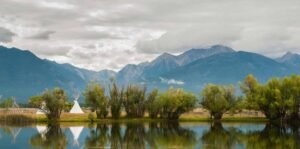
Phoenix, Arizona
Phoenix, the capital city of Arizona, is a sprawling metropolis known for its vibrant culture, diverse population, and desert landscapes. As the fifth-most populous city in the United States, Phoenix has grown rapidly, becoming a major economic and cultural hub in the southwestern region. Here are key aspects of Phoenix:
- Climate and Geography:
- Phoenix is located in the Sonoran Desert, and its climate is characterized by extremely hot summers and mild winters. The city is surrounded by mountains, including the McDowell Mountains and the iconic Camelback Mountain, offering stunning views and outdoor recreational opportunities.
- Economic Hub:
- Phoenix has a diverse and rapidly growing economy, with key sectors including technology, healthcare, education, and manufacturing. The city’s strategic location and business-friendly environment have attracted companies, contributing to its economic vitality.
- Cultural Diversity:
- Phoenix is a melting pot of cultures, with a diverse population that includes residents from various ethnic backgrounds. This diversity is reflected in the city’s culinary scene, cultural festivals, and neighborhoods.
- Arts and Culture:
- The city boasts a vibrant arts and culture scene. The Phoenix Art Museum, Heard Museum, and the Musical Instrument Museum showcase a rich array of artistic expressions. Downtown Phoenix’s Roosevelt Row Arts District is known for its galleries, street art, and cultural events.
- Sports and Recreation:
- Phoenix is a sports lover’s paradise. The city is home to professional sports teams such as the Phoenix Suns (NBA), Arizona Cardinals (NFL), and Arizona Diamondbacks (MLB). Golf enthusiasts can enjoy numerous golf courses, and outdoor enthusiasts have access to hiking, biking, and water activities.
- Parks and Outdoor Activities:
- Despite its desert setting, Phoenix offers a variety of parks and outdoor spaces. Papago Park, South Mountain Park, and Desert Botanical Garden are popular destinations for hiking, picnics, and enjoying the unique desert flora.
- Arizona State University (ASU):
- ASU’s main campus is located in nearby Tempe, but Phoenix is closely tied to the university. ASU contributes to the city’s educational and research landscape, and its presence adds a youthful energy to the metropolitan area.
- Sky Harbor International Airport:
- Phoenix Sky Harbor International Airport is one of the busiest airports in the United States, connecting Phoenix to domestic and international destinations. Its convenient location facilitates travel for residents and visitors.
- South Mountain Park:
- South Mountain Park, one of the largest municipal parks in the U.S., offers panoramic views of the city and a vast network of trails for hiking, mountain biking, and horseback riding.
- Urban Revitalization:
- Downtown Phoenix has undergone significant revitalization in recent years. The Roosevelt Row Arts District, CityScape, and the Arizona Center contribute to a thriving urban core with restaurants, shops, and entertainment venues.
In summary, Phoenix is a dynamic and diverse city that combines urban sophistication with the beauty of the desert. Whether enjoying cultural events, exploring outdoor recreation, or embracing the city’s economic opportunities, Phoenix offers a multifaceted experience for residents and visitors alike.




Responses